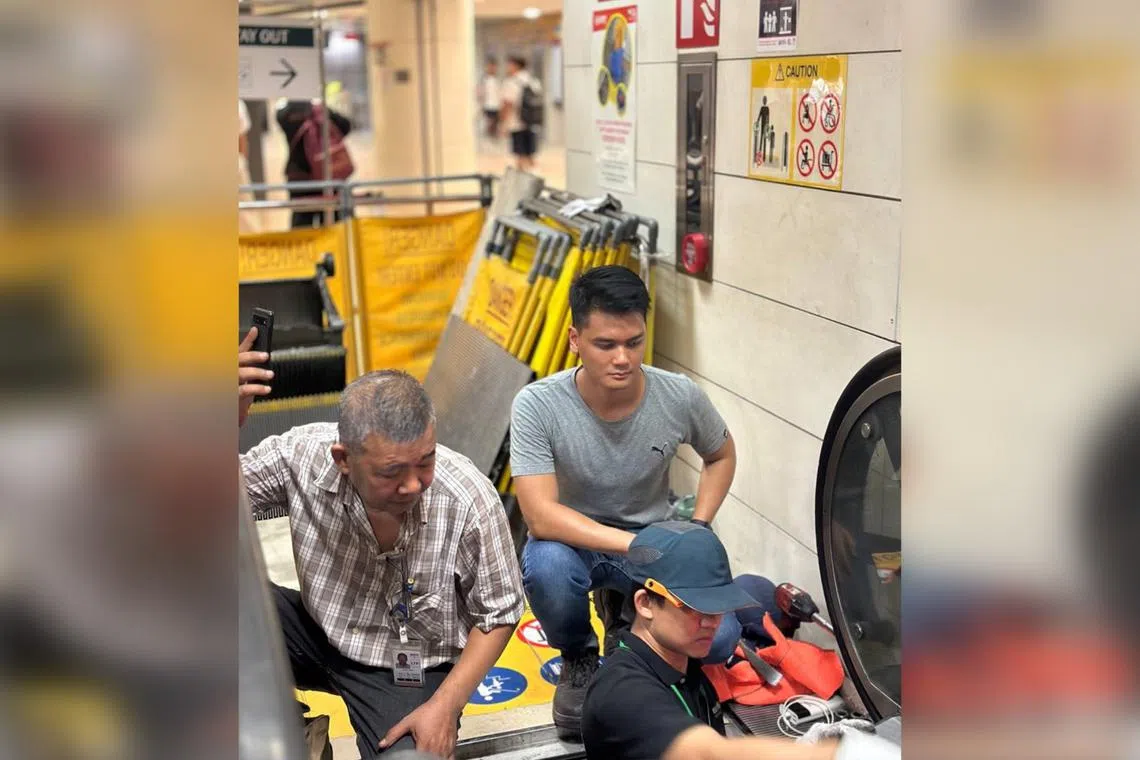SIT’s work-study programme, built over 10 years, records success with 900 partner companies
Sign up now: Get ST's newsletters delivered to your inbox

SIT graduate Muhammad Tirmidzi Mohamed Harun, 29, now works as an executive engineer with SMRT, where he did his internship.
PHOTO: SMRT
Follow topic:
SINGAPORE – When the Singapore Institute of Technology (SIT) launched its work-study programme close to 10 years ago requiring its students to take eight-month to year-long internships, there were some doubts as to whether students would take to the longer durations and if companies would come on board to offer positions.
Most university internships at the time were less than six months long.
It started with only 11 partner companies, but today, 10 years later, the numbers and facts speak for the success of the university’s flagship programme, IWSP, or Integrated Work Study Programme.
Some 900 partner companies have come on board to offer internships, including big names such as Deloitte, PwC, Siemens, Accenture and government and government-linked companies, including SMRT and the Cyber Security Agency of Singapore.
With so much interest from companies, the 2,500 SIT students going on internship each year have on average three positions to choose from.
What is more, one in two SIT graduates receives job offers from the companies that they have interned with even before they graduate, and close to half of them accept the job offers.
Some employers, such as transport operator SMRT, have been so impressed with the work done by SIT students that they offer them second-year seniority when they decide to join the company after graduation. This means that SIT graduates joining SMRT are given the same status, remuneration and benefits as employees who have completed one year of work.
SIT president Chua Kee Chaing is heartened that the longer and more substantive work attachments have translated into good job prospects for the university’s graduates.
He said the key to the success of the programme is that it is structured in a unique and distinct way for each degree programme, catering to the specific needs of the industry.
Students are asked to treat it as real work. They have to apply for the positions, as they would for any job. SIT also has a team that monitors the students’ progress weekly.
By the end of their internships, students are encouraged to identify a problem in their companies which they can use as a case study for their final-year project and come up with solutions.
Professor Chua said: “I am not surprised that companies such as SMRT and a few others are offering a career jump-start for our students. After all, they have eight months to a year of accumulated relevant work experience during the course of their undergraduate study. So, they are really ready to hit the ground running when they go back to work for the companies they interned with.”
He is also heartened by the growth in the number of partner companies despite companies having to co-design and co-deliver the curriculums. Partner companies also have to assign staff to guide and train the student interns.
Partner companies, including Weston Robot and STMicroelectronics, say they support the programme because students gain strong grounding in applicable theory in a real work environment, enhancing their job-readiness.
It also helps that students learn more about the sponsoring company’s work culture and fit in more readily.
SMRT Trains president Lam Sheau Kai said SMRT values the fresh perspectives and keen enthusiasm that interns from SIT have brought to the operator, adding that the collaboration is part of its long-term plan to cultivate a robust talent pipeline for Singapore’s rail and transport industry.
SIT graduate Muhammad Tirmidzi Mohamed Harun, 29, who now works as an executive engineer with SMRT, said he was pleasantly surprised that his one-year internship counted towards his length of service. Other fresh graduates who did not complete an internship with SMRT typically start from scratch.
“The internship was challenging, but I picked up valuable skills. It also helped me expand my network opportunities and exposure to the industry,” he said.
“It got me job-ready and I could hit the ground running.”


